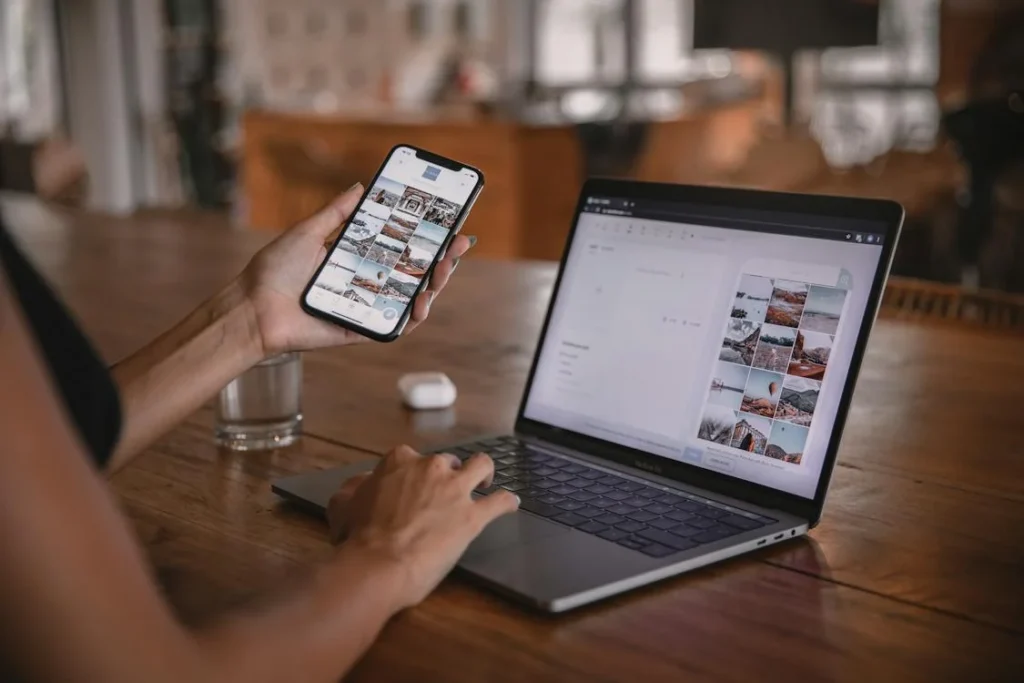This Article has been revised, edited and added to, by Poulomi Chakraborty.
- Understanding the Target Audience
- Creating Personas
- Language and Linguistic Preferences
- Cultural Sensitivities and Nuances
- Utilizing Behavioral Analytics for Enhanced Engagement
- Leveraging Predictive Analytics for Strategic Planning
- Geographic and Cultural Insights for Targeted Marketing
- Social Listening for Real-Time Audience Insights
- A Strategic Approach to Understanding Your Audience
- Regional SEO Tactics
- Understanding Local Search Engine Dynamics
- Cultivating Localized Content with Cultural Resonance
- Strategic Link Building within Regional Contexts
- Local SEO and the Power of Location-Based Keywords
- Leveraging Social Media and Influencers for Regional Engagement
- Crafting a Comprehensive Regional SEO Strategy
- Mobile Optimization
- Content Strategy
- Technical SEO Considerations
- Analytics and Metrics
- Actionable Strategies: Building a Robust SEO Plan
- Conclusion: Setting the Stage for Success
In a dynamic global landscape, where educational horizons are constantly expanding, international student recruitment stands as a vital component in the progressive march of educational institutions. This vibrant space is not just about reaching out; it is about connecting, influencing, and fostering relationships that would pave the way for a rich and diverse learning environment.
SEO, or Search Engine Optimization, comes into this picture as a silent yet potent force, the strings behind the curtains, pulling together elements that could make a substantial difference in this endeavor. It wields the power to enhance visibility, build narratives, and essentially, create a bridge between the educational entities and the eager minds wanting to delve into academic pursuits.
But, as with every powerful tool, SEO comes with its set of challenges, especially when navigating the intricate pathways of international student recruitment. In the subsequent sections, we will delve deeper into these challenges, understanding them from various facets – technical, content, and beyond.
So, what exactly are the impediments that stand in the way? How do educational institutions align their SEO strategies to better reach international prospects? Let’s embark on this enlightening journey, examining the intricate web of challenges, and seeking solutions that are both effective and enduring.
Stay tuned as we unravel the complexities, one layer at a time, constructing a roadmap that would guide you in forging SEO strategies that resonate with international student demographics, connecting dots, and creating pathways of opportunities.
Understanding the Target Audience

Before embarking on any SEO journey, it is vital to understand who you are speaking to. In the context of international student recruitment, the audience is expansive and diverse. From students to parents, educational consultants, and beyond — the spectrum of the audience is broad. The initial step, therefore, lies in carving out detailed persona maps that outline the characteristics, preferences, and behaviors of these various demographic groups.
Creating Personas
Creating detailed personas helps in honing the SEO strategies to resonate well with the target audience. This involves a deep understanding of the cultural nuances, educational backgrounds, and linguistic preferences of the potential students.
Language and Linguistic Preferences
An understanding of the linguistic landscape is crucial. Students from different regions have varied preferences when it comes to language, and this should reflect in your SEO strategies.
For instance, offering content in multiple languages can be a game-changer. It not only enhances the user experience but also significantly broadens the reach, encompassing students from diverse linguistic backgrounds.
Cultural Sensitivities and Nuances
Understanding and respecting the cultural backgrounds of prospective students form a vital part of SEO strategy. It transcends beyond merely translating the content to different languages and encompasses the formulation of content that respects and celebrates the cultural diversity of the international student population.
Utilizing Behavioral Analytics for Enhanced Engagement
Behavioral analytics provides a goldmine of information about how prospective students interact with your digital platforms. By analyzing patterns in website navigation, content engagement, and social media interaction, startups can tailor their marketing efforts to align more closely with the interests and needs of their audience. This strategic approach not only improves user engagement but also increases the chances of converting prospects into applicants.
To implement this, startups should integrate analytics tools that track user behavior across all digital touchpoints. The insights garnered from these tools enable the creation of personalized content and messaging, which speaks directly to the aspirations and concerns of different segments within the broader international student audience.
Leveraging Predictive Analytics for Strategic Planning
Predictive analytics goes a step further by using data, statistical algorithms, and machine learning techniques to identify the likelihood of future outcomes based on historical data. For startups in the educational sector, this means being able to anticipate trends in student interest, course demand, and even changes in international education policies.
By applying predictive analytics, startups can proactively adjust their SEO and content strategies to stay ahead of emerging trends. For instance, if data suggests a growing interest in sustainability and climate change among students, institutions can begin to highlight relevant programs, research opportunities, and eco-friendly campus initiatives well in advance.
Geographic and Cultural Insights for Targeted Marketing
Understanding the geographic and cultural context of your target audience is crucial in international student recruitment. Different regions may have varying levels of familiarity with certain educational systems, preferences for program types, or even specific financial considerations.
Startups should use geographic and cultural insights to customize their SEO efforts. This could involve creating region-specific webpages that address local concerns and highlight the institution’s value proposition in a culturally relevant manner. Additionally, content can be tailored to reflect local events, holidays, or achievements, making the institution more relatable and attractive to potential students from those areas.
Social Listening for Real-Time Audience Insights
Social listening tools monitor digital conversations about your brand or relevant topics across various platforms. This real-time insight into what potential students are saying online offers an invaluable resource for understanding their concerns, questions, and preferences.
Incorporating social listening into your strategy allows for the agile adjustment of SEO and content marketing efforts to address emerging trends, questions, or misconceptions. This responsiveness not only enhances the institution’s reputation among potential international students but also contributes to a more engaging and relevant user experience.
A Strategic Approach to Understanding Your Audience
In summary, the successful recruitment of international students in today’s digital age requires a sophisticated understanding of your target audience that goes beyond surface-level demographics.
By employing behavioral and predictive analytics, along with geographic and cultural insights, startups can develop highly targeted, engaging, and effective SEO strategies. Coupled with the agility provided by social listening, these approaches ensure that your institution remains at the forefront of prospective students’ minds, ready to meet their educational aspirations and needs.
Regional SEO Tactics

In the competitive landscape of international student recruitment, regional SEO tactics stand as the cornerstone for educational institutions aiming to enhance their visibility across diverse geographic landscapes. This tailored approach acknowledges the nuanced preferences and search behaviors of potential students across different regions, enabling startups to optimize their digital presence effectively.
Understanding Local Search Engine Dynamics
The dominance of Google in the global search engine market is well-acknowledged, but savvy startups recognize the importance of optimizing for regional search engines to capture the attention of a broader audience.
For example, Baidu reigns supreme in China, Yandex is preferred in Russia, and Naver is popular in South Korea. Each search engine has its unique algorithms and optimization requirements, from the importance of local hosting for faster site speed to the necessity of using local language and nuances in keyword strategies.
To leverage this, startups must delve deep into the specifics of each search engine, adapting their SEO practices accordingly. This might involve the creation of dedicated regional websites or pages that cater to the specific technical and content preferences of these platforms. Ensuring compatibility with local search engines can significantly boost the visibility of educational institutions within these targeted markets.
Cultivating Localized Content with Cultural Resonance
Beyond mere translation, the development of localized content that resonates with cultural nuances and preferences is key to engaging potential international students. This involves a strategic blend of local language content, culturally relevant examples, case studies, and testimonials that reflect the institution’s awareness and appreciation of the target region’s culture.
Incorporating local holidays, events, and achievements into your content calendar not only enhances relevance but also demonstrates the institution’s commitment to integrating into the local community. Such efforts can significantly strengthen the emotional connection between the institution and prospective students, making the educational offer more appealing.
Strategic Link Building within Regional Contexts
Building a network of backlinks from reputable local websites, educational forums, and news outlets can significantly enhance an institution’s SEO performance in specific regions. This strategy not only improves search engine rankings but also establishes the institution’s authority and credibility within the local context.
Startups should seek partnerships and collaborations with local educational bodies, alumni networks, and even student organizations to facilitate this process. Guest posts, joint research publications, and event sponsorships can serve as effective avenues for building these valuable regional backlinks.
Local SEO and the Power of Location-Based Keywords
Incorporating location-based keywords into your SEO strategy is crucial for capturing the attention of students searching for educational opportunities within specific regions. This includes the use of city names, country names, and even neighborhood specifics in keyword phrases.
To optimize for location-based searches, startups should ensure that their institution’s name, address, and contact information are accurately and consistently listed across all digital platforms, including social media profiles, directory listings, and the institution’s website. Utilizing Google My Business and other local listing services can further enhance visibility in local search results.
Leveraging Social Media and Influencers for Regional Engagement
Social media platforms offer a unique opportunity to engage with potential students on a regional level. Utilizing regional social media platforms, such as Weibo in China or VKontakte in Russia, can significantly extend an institution’s reach.
Collaborations with local influencers who resonate with the target demographic can amplify your institution’s message, leveraging their credibility and reach to attract prospective students. Tailored social media campaigns that highlight the institution’s involvement with local communities, events, and cultural initiatives can further reinforce this engagement.
Crafting a Comprehensive Regional SEO Strategy
Adopting a regional approach to SEO allows educational institutions to navigate the complex web of global student recruitment with precision and effectiveness. By understanding local search engine dynamics, cultivating localized content, engaging in strategic link building, optimizing for location-based searches, and leveraging social media for regional engagement, startups can significantly enhance their visibility and attractiveness to international students.
This comprehensive strategy not only positions the institution as a preferred choice for prospective students but also builds a foundation for sustained growth and success in the global educational landscape.
Mobile Optimization

In today’s digital era, where the majority of the global youth navigates the internet primarily through mobile devices, optimizing your educational institution’s online presence for mobile is not just beneficial—it’s imperative. This section delves into advanced strategies for mobile optimization, ensuring your institution stands out in the competitive landscape of international student recruitment.
Crafting a Mobile-First Website Design
The concept of mobile-first design is foundational in the current digital landscape. This approach involves designing an online experience for mobile before scaling up to larger screens, contrary to the traditional method of starting with desktop designs. A mobile-first website not only loads faster on smartphones and tablets but also provides a user-friendly experience that caters to the on-the-go lifestyle of prospective international students.
Incorporating a fluid layout, accessible menus, and touch-friendly interfaces ensures that your site is navigable and engaging on small screens. Moreover, prioritizing content based on mobile user behavior can significantly enhance the effectiveness of your site, ensuring that key information and calls to action are readily accessible.
Accelerating Page Load Speeds
Page load speed is a critical factor in user retention and search engine ranking, especially on mobile devices where users expect quick access to information. Implementing technical optimizations such as compressing images, leveraging browser caching, and minimizing the use of heavy scripts can drastically improve mobile site performance.
Advanced techniques such as lazy loading—where content is loaded only when it’s needed as the user scrolls—can further speed up page load times, enhancing the user experience and reducing bounce rates. Employing a Content Delivery Network (CDN) can also accelerate content delivery by hosting your site’s data on servers across the globe, ensuring faster access for international students.
Ensuring Responsive and Adaptive Design
A responsive website automatically adjusts its layout and content to fit the screen size and resolution of the viewing device. This flexibility is crucial for providing an optimal viewing experience across a wide range of mobile devices. An adaptive design takes this a step further by detecting the device and loading a custom layout specifically designed for that device’s screen size and capabilities.
Incorporating responsive and adaptive design elements ensures that your institution’s website is accessible and engaging, regardless of how prospective students choose to access it. This approach not only improves user satisfaction but also positively impacts SEO rankings, as search engines favor mobile-friendly sites.
Integrating Mobile-First Content and Features
To truly engage a mobile audience, educational institutions must think beyond basic optimization and integrate mobile-first content and features. This includes creating short, impactful content that is easily digestible on small screens, such as infographics, short videos, and interactive tours of your campus.
Additionally, incorporating features like one-touch call buttons, chat support, and simple forms can enhance the mobile user experience, making it easier for prospective students to inquire, apply, or connect with your institution directly from their mobile device.
Leveraging Mobile SEO and Local SEO Strategies
Mobile SEO involves optimizing your site for mobile search queries and ensuring that it meets the technical requirements favored by mobile search algorithms. This includes mobile-friendly site structures, optimized meta tags for mobile search results, and ensuring site content is indexed correctly for mobile searches.
Local SEO strategies are also crucial for mobile optimization, as many international students use mobile devices to search for educational opportunities near them or in specific locations. Optimizing for local search includes ensuring your institution’s location is accurately listed across all platforms, utilizing local keywords, and encouraging reviews from current and past students to enhance your institution’s local search presence.
Securing a Competitive Edge with Mobile Optimization
Advanced mobile optimization strategies are not just about meeting the minimum requirements for mobile-friendliness. They’re about creating a seamless, engaging, and fast mobile user experience that reflects the needs and behaviors of today’s international student.
By prioritizing a mobile-first design, accelerating page load speeds, ensuring responsive and adaptive layouts, integrating mobile-centric content, and leveraging mobile and local SEO strategies, educational institutions can significantly enhance their international student recruitment efforts, setting the stage for a more connected and mobile-optimized future in education marketing.
Content Strategy
A robust content strategy is pivotal in navigating the complex landscape of international student recruitment. This strategy must transcend beyond mere translation of existing content to encompass a multifaceted approach that engages, informs, and resonates with a diverse global audience. Herein lies a blueprint for educational institutions and startups aiming to refine their content strategy to effectively reach and appeal to international prospects.
Cultivating a Storytelling Approach
Storytelling has the power to connect on a personal level, transcending cultural and linguistic barriers. By weaving the institution’s values, achievements, and unique selling propositions into compelling narratives, startups can capture the imagination and aspirations of prospective students from various backgrounds.
Showcasing Student Success Stories
Highlighting success stories of international students who have thrived at your institution serves a dual purpose. It provides tangible proof of the supportive and enriching environment your institution offers, and it allows prospects to see themselves in those success stories, fostering a deeper connection and sense of belonging.
Leveraging Visual Storytelling
Incorporating visual elements such as infographics, virtual tours, and student-created content can make stories more engaging and accessible, particularly for audiences with varying levels of language proficiency. Visual storytelling not only enhances the narrative but also aids in breaking down complex information, making it more digestible for a global audience.
Implementing an SEO-Driven Editorial Calendar
An SEO-driven editorial calendar is essential for maintaining a consistent and strategic approach to content creation. By aligning content topics with key search trends, cultural events, and academic cycles pertinent to your target regions, you can ensure your content remains relevant and timely.
Timing Content with Global Academic Cycles
Understanding and aligning content with the global academic cycles, including application periods, exam seasons, and national holidays, can increase engagement and relevance. Tailoring content to these cycles demonstrates an understanding of the prospective students’ journey, providing them with valuable information exactly when they need it.
Keyword Optimization for Global Audiences
Conducting thorough keyword research to understand the search behavior of international audiences is crucial. This research should guide the creation of content that not only ranks well in search engines across different regions but also addresses the specific questions and concerns of international prospects.
Diversifying Content Formats for Broad Appeal
Different audiences consume content in various ways, and a one-size-fits-all approach to content format can limit your reach. Diversifying content formats ensures that you cater to the preferences of a broader audience, increasing engagement and interaction.
Interactive Content
Interactive content such as quizzes, virtual campus tours, and online workshops can significantly enhance engagement, providing a dynamic way for prospective students to learn about your institution and its offerings.
Webinars and Live Q&A Sessions
Hosting webinars and live Q&A sessions on topics of interest to international students can not only serve as a valuable informational resource but also establish your institution as a thought leader in the education sector. These live interactions offer a platform for direct engagement and personalized information dissemination.
Fostering Community Through Content
Creating spaces for prospective and current international students to share experiences and ask questions can foster a sense of community and belonging. This can be facilitated through discussion forums, student blogs, and social media groups.
Leveraging User-Generated Content
Encouraging current students to share their experiences through blogs, videos, and social media posts can provide authentic insights into life at your institution. User-generated content not only enriches your content strategy but also serves as a powerful endorsement of your institution.
Elevating Your Institution Through Strategic Content
In sum, a strategic content strategy for international student recruitment requires a deep understanding of your audience’s needs, preferences, and behaviors. By employing storytelling, creating an SEO-driven editorial calendar, diversifying content formats, and fostering a sense of community, educational institutions can effectively engage with international prospects. This approach not only enhances the institution’s global reach but also builds a strong, resonant brand that appeals to a diverse student body.

Related: Check out our free SEO suite

Technical SEO Considerations
In the competitive arena of international student recruitment, mastering the technical aspects of SEO is crucial for ensuring your educational institution’s website is discoverable, accessible, and engaging for a global audience. This comprehensive approach to technical SEO considerations goes beyond basic optimization, delving into advanced strategies to boost your institution’s online presence and appeal to international prospects.
Ensuring a Solid Technical Foundation
A robust technical foundation is essential for any effective SEO strategy. This involves creating a website that is not only search engine friendly but also provides a seamless user experience across all devices and platforms.
Implementing Structured Data
Structured data plays a pivotal role in helping search engines understand the content of your website and providing rich results. By implementing schema markup for educational institutions, you can enhance your visibility in search results with rich snippets, including course listings, ratings, and events, making your offerings more attractive to prospective students.
Secure and Fast Hosting Solutions
Choosing a hosting solution that ensures fast load times and high availability worldwide is critical. Consider leveraging cloud hosting services that offer content delivery networks (CDN) to ensure that your website performs optimally for users regardless of their geographic location.
Advanced On-Page SEO Techniques
On-page SEO is vital for making your website’s content understandable and easy to find by both search engines and users. This involves optimizing elements such as titles, headings, and meta descriptions, but also goes much deeper.
Enhancing User Experience with UX/UI Design
The user experience (UX) and user interface (UI) design of your website significantly impact your SEO performance. A clean, intuitive design that facilitates easy navigation and minimizes bounce rates is crucial. Pay particular attention to the mobile user experience, as this can greatly affect your rankings and user engagement.
Optimizing for Voice Search
With the rise of voice-activated devices, optimizing for voice search has become increasingly important. Incorporating natural language processing (NLP) and focusing on long-tail keywords can help your content align more closely with the conversational queries used in voice search.
Boosting Site Performance
The performance of your website not only affects user experience but also plays a significant role in search engine rankings.
Accelerating Page Speed
Page speed is a critical factor for both user satisfaction and SEO. Techniques such as compressing images, minifying CSS and JavaScript files, and leveraging browser caching can significantly reduce load times, improving the overall user experience and boosting your SEO rankings.
Mobile Performance Optimization
Given the prevalence of mobile browsing among prospective international students, optimizing your site’s performance on mobile devices is non-negotiable. This includes implementing responsive design, optimizing images for mobile, and minimizing redirects.
Improving Site Structure and Navigation
A well-organized site structure and intuitive navigation are key to helping users and search engines find information on your website. This involves creating a logical hierarchy of pages, using breadcrumb navigation, and implementing a comprehensive internal linking strategy to distribute page authority and improve discoverability.
Multilingual SEO and Hreflang Tags
For institutions targeting international students, offering content in multiple languages is essential. Implementing hreflang tags correctly ensures that search engines serve the correct language or regional URL in search results, providing a better user experience for international visitors.
Leveraging Analytics for Continuous Improvement
Utilizing web analytics tools is crucial for monitoring your website’s performance and identifying areas for improvement. Regularly analyzing metrics such as page views, bounce rate, and conversion rates allows you to refine your SEO strategy and enhance the effectiveness of your technical optimizations.
Mastering Technical SEO for Global Engagement
In conclusion, technical SEO is a critical component of any strategy aimed at recruiting international students. By ensuring a solid technical foundation, employing advanced on-page SEO techniques, boosting site performance, improving site structure and navigation, and leveraging analytics for continuous improvement, educational institutions can significantly enhance their global online presence. This not only improves visibility among international prospects but also creates a more engaging and accessible digital experience for prospective students worldwide.
Analytics and Metrics

In the digital age, the power of analytics and metrics cannot be overstated for educational institutions aiming to enhance their international student recruitment efforts. Utilizing data-driven insights allows for the refinement of SEO strategies, ensuring that institutions can effectively target and engage with their desired audience across the globe.
Establishing Key Performance Indicators (KPIs)
Identifying and monitoring the right KPIs is crucial for measuring the success of your SEO and marketing efforts. These indicators should align with your institution’s overall objectives for international recruitment, enabling you to track progress and make informed decisions.
Website Traffic and Source Analysis
Understanding where your traffic comes from and how users interact with your site can provide valuable insights into the effectiveness of your marketing strategies. Analyzing traffic sources, such as direct visits, search engines, social media, and referral sites, allows you to identify which channels are most effective in attracting prospective international students.
Engagement Metrics
Engagement metrics, including bounce rate, average session duration, and pages per session, offer insights into how engaging and relevant your content is to your audience. High engagement rates often indicate that your site provides valuable information that resonates with prospective students, encouraging them to explore more of your content.
Utilizing Advanced Analytics Tools
Beyond basic analytics platforms, there are advanced tools and techniques that can offer deeper insights into user behavior and preferences.
User Behavior Analysis Tools
Tools like heatmaps, session recordings, and funnel analysis can reveal how users interact with your website, highlighting areas of interest as well as potential barriers to conversion. This information is invaluable for optimizing the user experience and guiding visitors toward taking desired actions, such as submitting an application or requesting more information.
Predictive Analytics
Predictive analytics uses historical data and machine learning algorithms to forecast future trends and behaviors. For international student recruitment, this can mean predicting peak application times, understanding which programs attract the most interest, or identifying emerging markets.
Segmenting Data for Targeted Insights
Data segmentation involves breaking down analytics data into specific groups for more targeted analysis. This approach can uncover unique behaviors and preferences within different segments of your target audience.
Geographic Segmentation
Analyzing data based on geographic location can help you understand how your marketing efforts are performing in different regions. This can guide more localized SEO strategies and content customization, ensuring that your messaging resonates with students from specific countries or regions.
Demographic and Behavioral Segmentation
Segmenting your audience by demographics (age, gender, education level) and behavior (site interactions, conversion paths) can provide insights into how different groups engage with your site. Tailoring your content and marketing strategies to meet the needs and preferences of these segments can enhance your recruitment efforts.
Integrating CRM and Analytics for Holistic Insights
Integrating your Customer Relationship Management (CRM) system with your analytics platform can provide a comprehensive view of the student journey, from initial website visit to application and beyond. This holistic approach enables you to track the effectiveness of your marketing efforts across the entire recruitment funnel, identifying opportunities for improvement and optimization.
Empowering Recruitment with Data-Driven Insights
Leveraging analytics and metrics is essential for developing and refining SEO strategies that effectively target international students. By establishing key performance indicators, utilizing advanced analytics tools, segmenting data for targeted insights, and integrating CRM and analytics for a holistic view, educational institutions can make informed decisions that enhance their international recruitment efforts.
This data-driven approach not only improves the efficiency of marketing strategies but also ensures a more personalized and engaging experience for prospective students, ultimately leading to increased enrollments.
Actionable Strategies: Building a Robust SEO Plan

This segment of the article offers a deep dive into practical strategies that educational institutions can incorporate to augment their SEO endeavors, specifically targeting international student recruitment.
Crafting SEO-Optimized Content
Creating content that resonates with international students involves understanding their unique needs and aspirations. Here, we share tips on crafting content that speaks to this demographic, leveraging SEO tools to identify the right keywords and build a content strategy that drives traffic and engagement.
Backlink Strategy: Building Authority and Trust
In the world of SEO, backlinks play a pivotal role in building the authority of your website. Discover the strategies to create a robust backlink profile, fostering partnerships with other educational platforms, and leveraging quality content to attract backlinks.
Conclusion: Setting the Stage for Success
In a world where the digital landscape is continuously evolving, staying updated with the latest SEO strategies is not just beneficial but essential. Through this detailed guide, we have traversed the varied facets of SEO, equipping you with the knowledge and tools required to chart a successful path in the competitive landscape of international student recruitment. As we wrap up this detailed exploration into SEO for international student recruitment, we hope this guide proves to be an indispensable tool in your SEO journey, fostering strategies that resonate with international students and build a formidable online presence.
Read Next:
- How You Can Register Your Copyright in the US
- Arbitration for Businesses in the US? Is it Effective?
- What Business Legal Structure Suits Your Business – Find Out!
- How You Can Choose a Revenue Model for Your Business
- Essentials to Keep in Mind When Drafting Your Patent (According to Experts)






















Comments are closed.